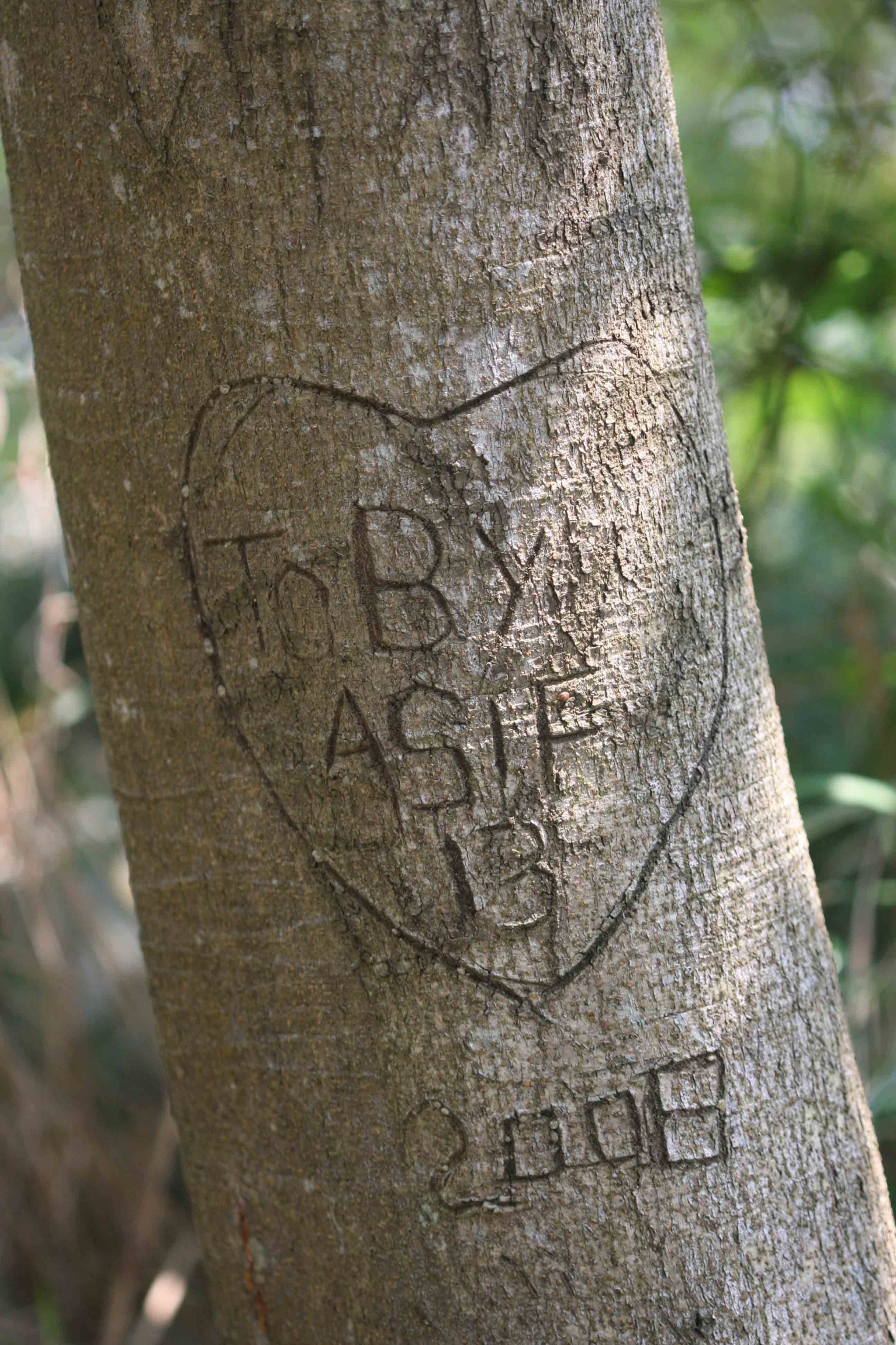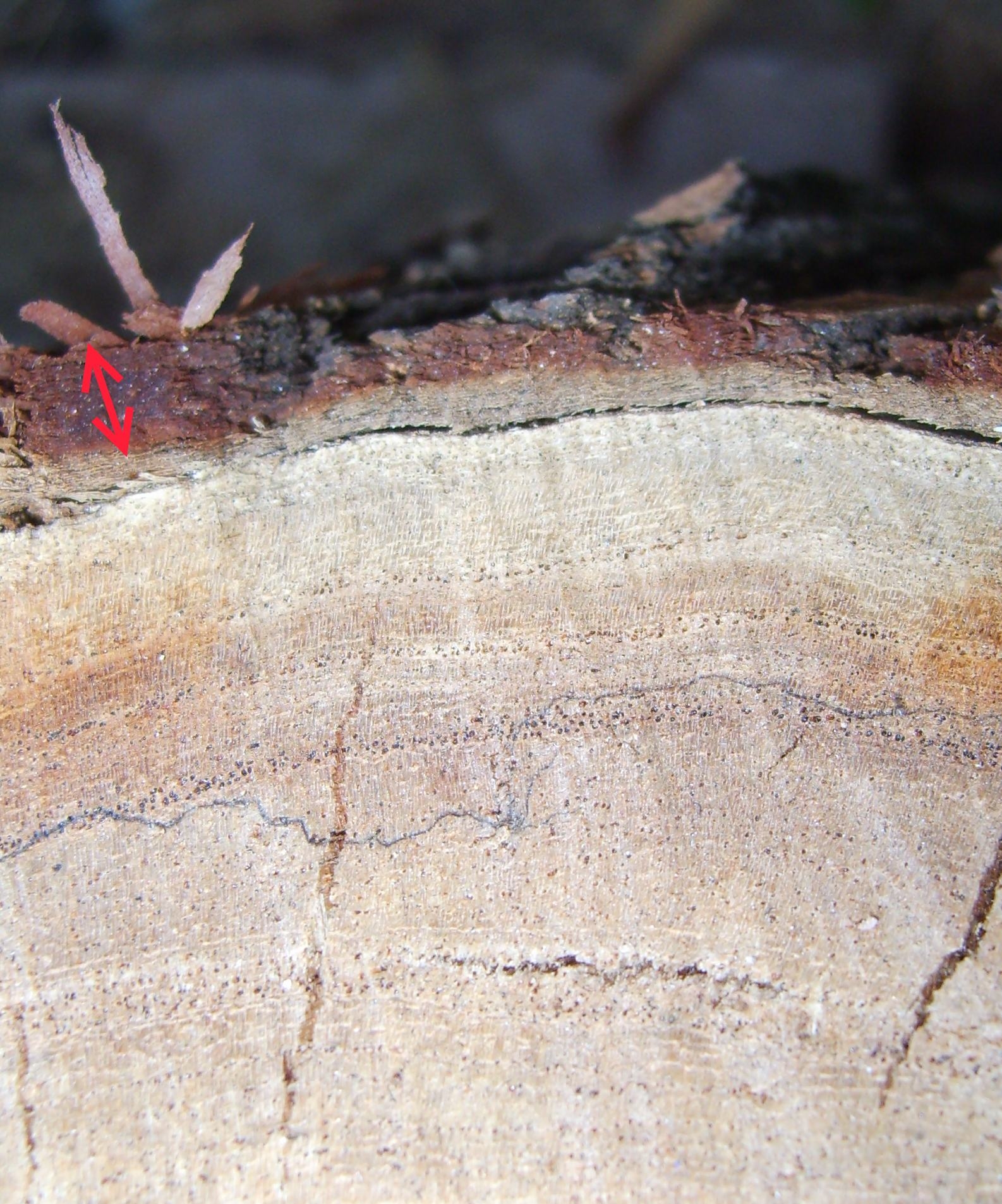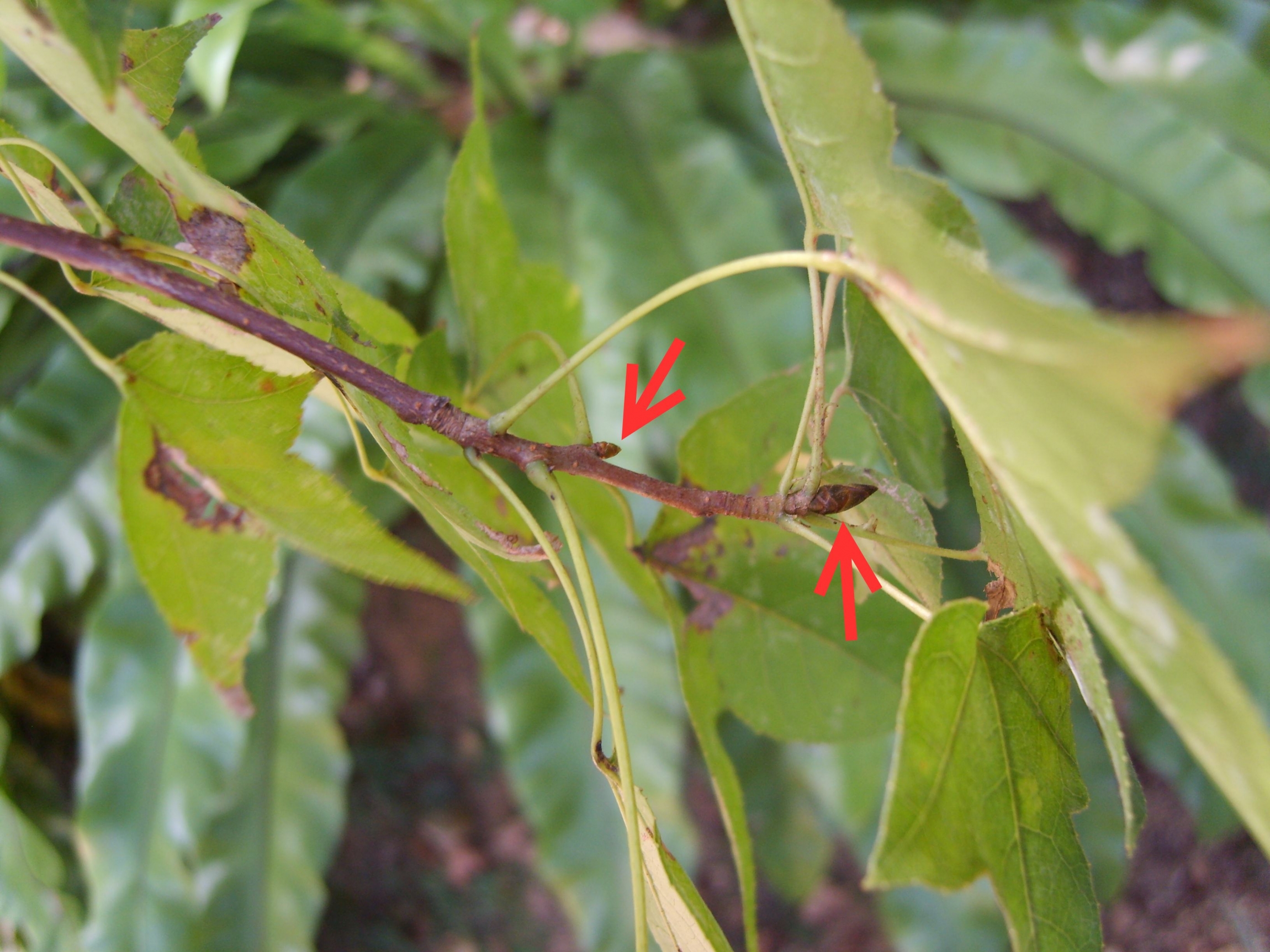When I was teaching a short-term course recently, there was a student raised a question to me. Though the students described it as a 'silly question', it did have a great relationship with trees physiology. Due to the limited time, I could only answer the question briefly in a rush. Thus, I would like to make a more detailed explanation in “Tree Journal”. The “silly question” was actually like this: “if we engraved a cross mark on the tree trunk, will the “X” get higher and higher with the growth of the tree?”
Actually, I think this question is not silly! As if you want to find out the answer, you have to observe the trees, and explain it with botanical knowledge of the growth of trees. This is the best way to learn about trees!
I believe many of you must have seen trunks being engravedwith texts (Figure 1). Actually, this is a damage to the trunk. But of course, the destruction of trunk can be divided into surface and inner tissue damages. If it is a surface damage, it may only affect the bark. As the outermost layer of the bark is phellogen(crok) which is not alive, therefore it may not affect the treessignificantly. So how about the engraved“X” , will it disappear? In general, the bark will crack slowly along with the thickness of the trunk increasing due to the secondary growthof woody plant. Tthe phellogen will also get thicker with the growth of trees (Figure 2). Due to this reason, the engravedmark may become “larger”. Unless the trees are the types which the bark will easily shed, or the trees need to adapt a particular situation to grow in an abnormal way which result in partially sheddingof bark. Otherwise, the mark will not disappear.
Furthermore, the question also asked whether the mark will become taller along with the growth of the tree. To answer this question, we need to talk about the primary growth of trees, which is heightincrement. The growing way of trees is height first, then thickness. The stems and branches are responsible for the height increment of trees. While the buds keep growing, trees and branches will be longer and taller (Figure 3). When the tree gets taller and taller, the trunk needs to grow thick enough in order to support the entire tree. This is so called secondary growth. The cambium under the bark of branches, trunk and roots is responsible for the secondary growth. Since the primary growth of the tree is processed by the top or lateral buds, the grown parts will not get taller significantly anymore. In other words, the engraved mark on the trunk will not be “elevated”.
Therefore, the engraved “X” on the tree may probably become wider and larger over times, but not significantly elevated. However, even the inscribed mark may not necessarily destroy the tissue under the barkfor some tree species, the trees with thinner bark may still be easily damaged. In addition, surface damage to the bark would affect a tree’s aesthetic value, along with potential violation of the law. Hence, any acts of vandalism on trees should be prohibited at all costs.
Trees are everywhere. If we can observe more about trees and find out the reasons and answers behind, we may discover the interesting world about trees.

Figure 1. Trunk was engraved with text

Figure 2. Phellogen layer (indicated by an arrow)

Figure 3. Buds, responsible for the primary growth (indicated by an arrow)

